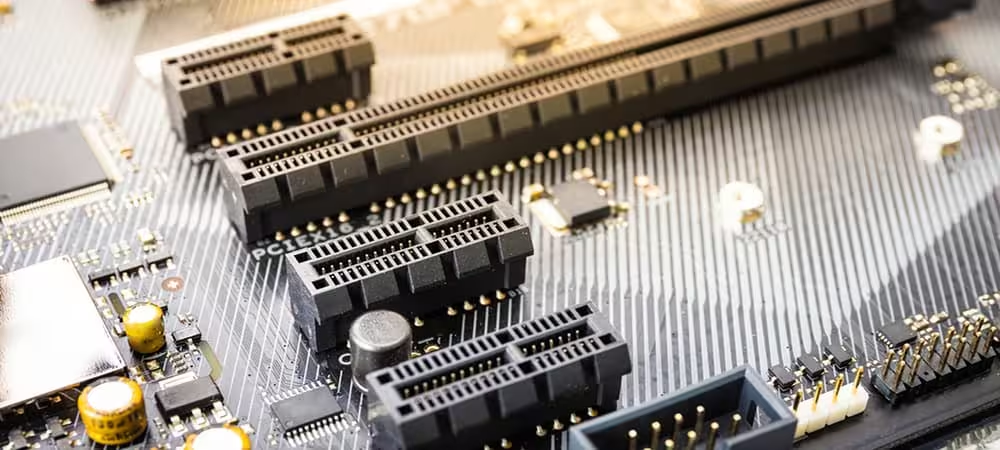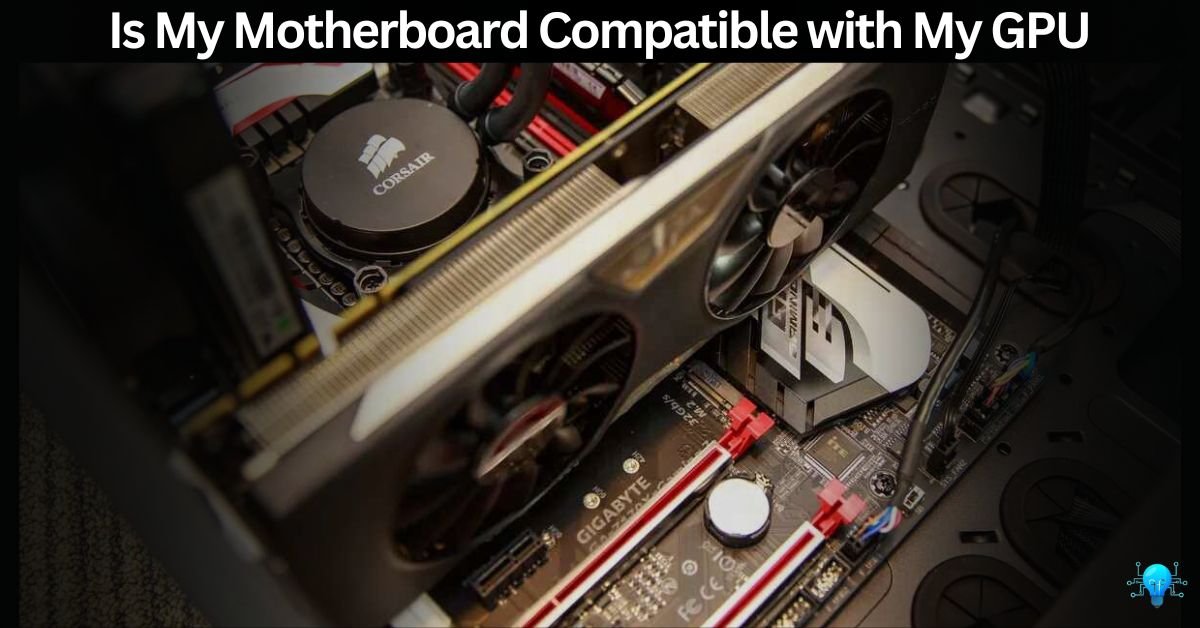To check if your motherboard is compatible with a GPU, ensure it has a PCIe x16 slot, sufficient power supply, and proper physical fit. Update BIOS if needed and confirm driver support for seamless installation.
Stay tuned with us! We’ll talk about how to check if your motherboard is compatible with a GPU. We’ll cover simple steps like checking the slot, power, and size. You won’t want to miss it!
Understanding Motherboard And GPU Compatibility – Factors To Consider!
Understanding motherboard and GPU compatibility is essential for building or upgrading a PC. Here are a some important factors to consider:
1. PCIe Slot Compatibility:
- PCIe Version: Ensure your motherboard has a PCIe slot that matches the GPU’s version (e.g., PCIe 3.0, PCIe 4.0). While PCIe is backward compatible, using a newer GPU on an older slot may affect performance.
- Physical Slot: Check if your motherboard has a PCIe x16 slot, which is standard for GPUs. Some high-end motherboards may have multiple PCIe x16 slots for multiple GPUs.
Must Check The Article: What Is The PS5 Gpu Equivalent? – PC Graphics Cards Comparison Guide!
2. Power Supply Requirements:
- Wattage: Verify that your power supply unit (PSU) can provide enough power for the GPU. Check the GPU manufacturer’s recommendations for the required wattage.
- Power Connectors: Ensure your PSU has the necessary power connectors (e.g., 6-pin, 8-pin) for the GPU. Some high-end GPUs may require multiple power connectors.
3. Form Factor and Clearance:
- Physical Size: Ensure your GPU fits within your computer case without obstructing other components.
- Cooling: Check if there’s sufficient airflow around the GPU to prevent overheating. Some GPUs may have bulky cooling solutions that require additional clearance.
Do You Know? Can I Use Radeon Gpu With Intel Cpu – Yes, You Can But!!!
4. BIOS and Firmware Updates:
- BIOS Compatibility: Some GPUs may require a BIOS update for compatibility with certain motherboards. Check the motherboard manufacturer’s website for BIOS updates.
- UEFI Support: Ensure your motherboard supports UEFI (Unified Extensible Firmware Interface) if your GPU requires it.
5. Operating System and Driver Support:
Verify that your operating system supports the GPU drivers. Download and install the latest drivers from the GPU manufacturer’s website for optimal performance.
Recent Post: Is FPGA Faster Than GPU – Comparison, Check!
6. Multi-GPU Configurations:
- SLI/Crossfire Support: If you plan to use multiple GPUs in SLI (NVIDIA) or Crossfire (AMD) configurations, ensure your motherboard supports this feature.
- Bridge Connectors: Some multi-GPU setups require bridge connectors. Check if your motherboard provides these connectors.
By considering these factors, you can ensure compatibility between your motherboard and GPU, leading to a smooth and efficient PC build or upgrade. Always consult the documentation provided by your motherboard and GPU manufacturers for specific compatibility information.
And if you need more help or advice, you can always check out resources like the Motherboard/CPU and GPU compatibility Reddit page here.
Some Popular GPU And Motherboard Compatibility Checkers – Explore Top Picks!
To check if a GPU is compatible with your motherboard, you can use several online tools and resources. These tools help ensure that your GPU will fit, work, and function properly with your motherboard. Here are a few popular ones:
PCPartPicker: A comprehensive tool that checks compatibility for all PC components, including GPUs and motherboards.
GPUCheck: Provides detailed compatibility information and performance benchmarks for GPUs and motherboards.
PCBuild’s Compatibility Checker: This simple tool for checking compatibility between your GPU, motherboard, and other components.
WhatToBuild: Easy-to-use tool to verify GPU and motherboard compatibility, focusing on component matching.
How To Install Motherboard with GPU?
Enter your motherboard and GPU models, and these tools will tell you if they are compatible. Additionally, they provide insights on other components and help prevent potential issues. This ensures a smooth and efficient PC build or upgrade.
If you want to know about How do I determine if a given GPU is compatible with some motherboard? check out this Quora thread for additional insights and information.
What Does PCIe Do – Make Your Computer Faster!
PCIe (Peripheral Component Interconnect Express) is a standard interface for connecting peripherals to a computer’s motherboard. It provides a high-speed connection for devices such as:
- Graphics cards
- Hard drives and (SSDs)
- Network cards
- Sound cards
- USB controllers
- Other expansion cards
Latest Post: Can I Bring A GPU On A Plane? – 2024 Rules!
PCIe provides several benefits, including:
- High bandwidth and speed
- Low latency
- Hot-swapping capability (for some devices)
- Scalability (multiple lanes can be combined for increased bandwidth)
PCIe has different versions (e.g., PCIe 3.0, PCIe 4.0, PCIe 5.0) and lane configurations (e.g., x1, x4, x8, x16), which determine the maximum data transfer rate and number of devices that can be connected.
Did You Explore? Is 80 Degrees Celsius Hot For A GPU? Attention, All gamers!
What Is The Importance Of PCIe Version In GPU Compatibility?
The PCIe version is important for GPU compatibility because it affects how fast data moves between the GPU and the motherboard. Higher PCIe versions (like PCIe 4.0 or 5.0) provide more speed, which can make high-end GPUs work better.

PCIe is backward compatible, so a newer GPU can still work in an older PCIe slot, but it will run at a slower speed. Using a matching PCIe version ensures you get the best performance and keeps your system ready for future upgrades. Do you Want to Know about GPU connections? Explore this informative article Do Both Monitors Need To Be Connected To The GPU?
Graphics (PEG) Connectors and Power Supply Requirements:
| Connector Type | Number of Connectors | Typical Wattage Requirement | Example GPUs |
| 6-Pin Connector | 1 | Up to 75W | GTX 1050 Ti, RX 560 |
| 8-Pin Connector | 1 | Up to 150W | GTX 1070, RX 580 |
| 6-Pin + 8-Pin Connector | 2 | Up to 225W | GTX 1080, RTX 2060 |
| Dual 8-Pin Connector | 2 | Up to 300W | RTX 2080 Ti, RX 5700 XT |
| Triple 8-Pin Connector | 3 | Up to 450W | RTX 3090, RX 6900 XT |
| 12-Pin Connector | 1 | Up to 500W | NVIDIA RTX 30 Series (Founder’s Edition) |
Can I Install Any GPU On Any Motherboard?
Normally, You can’t install any GPU on any motherboard. Motherboards have specific slots (called PCIe slots) that only certain GPUs can fit into. Also, some motherboards don’t have enough power to support certain GPUs. So, you need to check if your motherboard is compatible with the GPU you want to install.
But if you have the right match for GPU with the right motherboard, then it could be possible. If Want to know more about GPU power connections? Check out: Can I Use a CPU Cable For GPU?
Do I Need To Update My Motherboard Drivers When Installing A New GPU?
Yes, it’s a good idea to update your motherboard drivers when installing a new GPU. While not always necessary, updating your motherboard’s chipset drivers can improve system stability and performance, ensuring better compatibility with the new GPU.
Additionally, installing the latest drivers can help resolve any potential issues that may arise from hardware changes and ensure your system runs smoothly. Go to the motherboard maker’s website to get the latest drivers. Have GPU issues? Learn more In this article Torch Is Not Able To Use GPU.
What Are The Consequences Of Using An Underpowered PSU With A New GPU?
System Instability:
Your computer may experience frequent crashes, freezes, or unexpected shutdowns as the GPU doesn’t receive enough power to operate properly.
Component Damage:
An underpowered PSU may struggle to deliver enough power to all components, potentially leading to damage to the GPU, motherboard, or other hardware components due to inconsistent power delivery.
Reduced Performance:
The GPU may not perform optimally or may throttle its performance to avoid drawing more power than the PSU can provide, resulting in reduced frame rates and overall performance in games and demanding applications.
Compatibility Issues:
Some high-end GPUs require specific power supply requirements, such as certain wattage ratings or power connectors. Using an underpowered PSU that doesn’t meet these requirements can cause compatibility issues and prevent the GPU from functioning properly.
Some troubleshooting Tips: To avoid these consequences, it’s essential to ensure that your PSU meets the power requirements of your GPU and provides sufficient wattage and power connectors for stable and reliable operation. Want to avoid GPU power problems? Discover more in this article GPU Power Consumption Drops
Frequently Asked Questions:
How can I check if my motherboard BIOS is compatible with a new GPU?
Visit your motherboard manufacturer’s website to check for BIOS updates and compatibility lists. Sometimes, specific GPUs require a certain BIOS version or a feature like UEFI support, which can be updated through a BIOS update.
Will my GPU fit in my computer case?
Measure the internal dimensions of your case, focusing on length, height, and width. Compare these with the dimensions of the GPU. Ensure there’s enough clearance for airflow and that the GPU doesn’t block other components or slots.
Can I use a PCIe x16 GPU in a PCIe x8 slot?
Yes, you can use a PCIe x16 GPU in a PCIe x8 slot. The GPU will work, but it will operate at the reduced bandwidth of the x8 slot, which may slightly affect performance, especially with high-end GPUs. However, for most users, this performance difference is usually minimal.
Are graphics cards universal to motherboards?
Graphics cards are not universal to motherboards due to differences in PCIe versions, slot sizes, and power connectors. Compatibility depends on the motherboard’s chipset, PCIe version, and power supply.
Can a motherboard support multiple GPUs?
Yes, some motherboards support multiple GPUs using technologies like SLI (NVIDIA) or Crossfire (AMD). Check your motherboard manual for support and specific configuration requirements.
Conclusion:
It’s really important to check if your motherboard and GPU can work together. You should make sure they have the right connections, enough power, and physically fit in your computer. Checking for BIOS updates and driver support is also key.
By doing these things, you can be sure that your GPU will work well with your motherboard, giving you the best performance for your PC.

